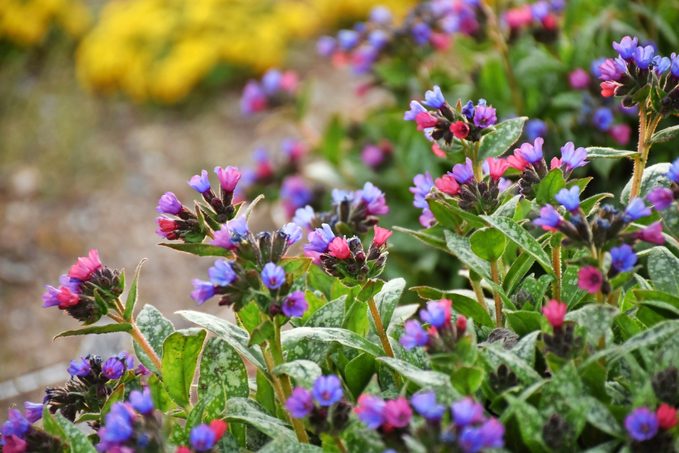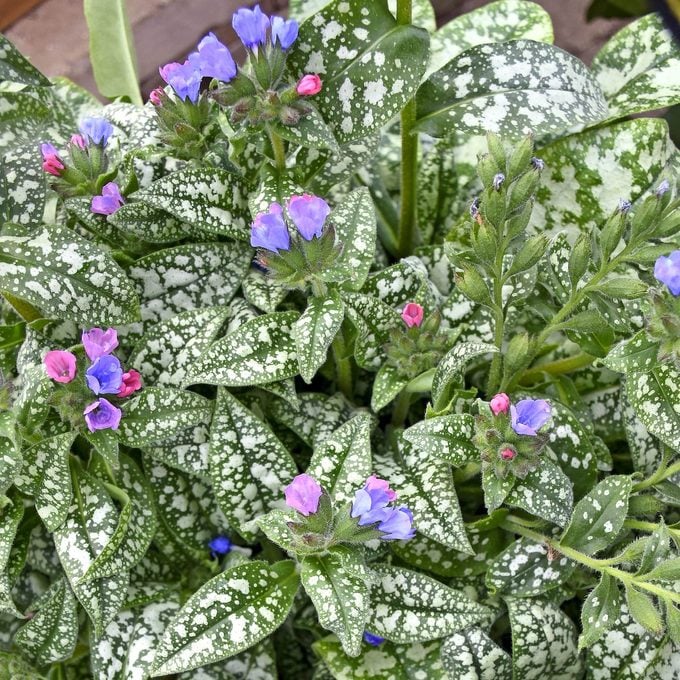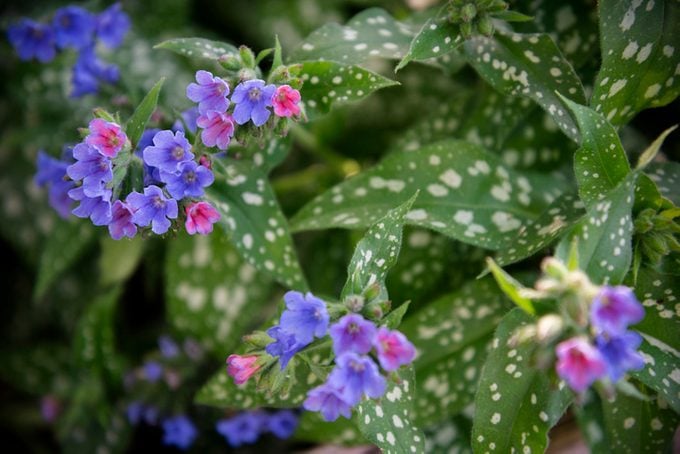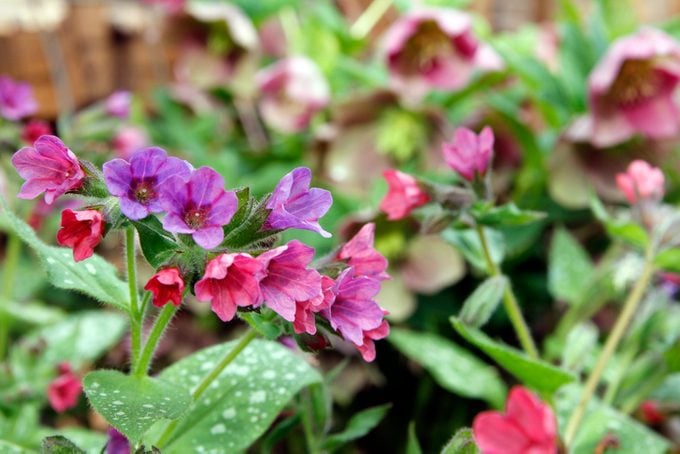Lungwort (Pulmonaria) Flower Care and Growing Tips
Updated: Apr. 10, 2024
A pollinator pleaser and delight for shady, moist areas, here's how to successfully care for lungwort (Pulmonaria) in your garden.
On This Page
How to Grow Lungwort Flowers

- Common name: Lungwort, spotted dog, Bethlehem sage
- Scientific name: Pulmonaria spp.
- Hardiness zones: 3 to 8
- Light needs: partial shade, shade
- Watering needs: moderate
- Preferred soil: consistently moist, well-draining, nutrient rich
- Size: clumps 6 to 12 inches tall and 12 to 24 inches high
- Attracts: hummingbirds, bees, butterflies
An energetic plant with a tragically unpleasant name, lungworts and their delicate multicolored flowers are coveted by gardeners for their ability to thrive in shady spaces.
“Colorful choices for a shade garden can be limiting, so any splash of color is a welcome addition,” says Spencer Campbell, Arboretum Plant Clinic Manager at The Morton Arboretum. “They can also be planted as ground cover to fill in areas of the garden where other plants may have a hard time getting established.”
Lungwort is one of the best shade garden plants for your shady areas.
Lungwort Foliage and Flowers

While pollinators love their flowers — which bloom early in the season and vary from blue and pink to purple, red and white — gardeners often choose them for their bushy, decorative leaves.
“Lungwort’s foliage is often adorned with white or silver spots once thought to resemble human lungs,” says Laura Root, a horticulturist at Park Seed. “This led to their historical use in treating respiratory ailments and earned it the name Pulmonaria.”
Grow hese fabulous foliage plants for garden pizzazz
Where to Plant Lungwort

When planted in the right conditions, Pulmonaria are a low-maintenance perennial — but finding that perfect happy place can be a bit of a task.
Their forever home should be in a shady area or one with dappled sunlight. They’re also particular about having moist, well-draining (but not soggy) soil. They love being under the shade of a tree canopy, but sometimes trees outcompete them for moisture, so in that case they may need supplemental water.
“Also, be mindful if you are planning to plant them around trees so you do not disturb their established surface roots,” says Spencer.
Psst—we found the perfect ground cover plants for every landscape.
How and When to Plant Lungwort

Most people plant Pulmonaria from potted plants or plugs, as they’re both difficult and slow to germinate by seed. While that raises the upfront costs a bit, they make up for it with value down the road.
“They are a great plant for division, making it valuable to the money saving gardener,” says Laura. “The best time to divide is after flowering. But they are slow spreaders so it is not advised to do this every year.”
Once you find your perfect Pulmonaria location, plant them in the spring, after the last frost. Early autumn is also a good time, as it allows the roots to get established before winter. Make sure to also fertilize them lightly with compost each spring.
Learn how to grow and care for hostas.
Lungwort Wildlife Benefits
While Pulmonaria is not native to North America, it is often considered a good addition to pollinator gardens anyway. As an early bloomer, it provides an important spring food source for bumblebees, plus its clump-forming growth creates habitat for beneficial insects like beetles and spiders, says Laura. It’s also rare to find a shade plant that’s good for attracting hummingbirds and butterflies.
Brunnera Jack Frost is another good choice for a shady spot.
Lungwort Cultivars to Grow
Pulmonaria comes in a wide variety of cultivars and hybrids. An especially noteworthy variety is Raspberry Splash, which is highly resistant to slugs and mildew infections, plus known for its vivid, large pink-and-purple bloom clusters.
Lungwort Pitfalls, Pests and Problems
One of the biggest complaints about Pulmonaria is that it wilts and dies back in hot weather. But, they usually perk up once the weather cools. To help them bounce back, trim off dead sections and keep them watered, but not soggy. Once they are done flowering, it’s also helpful to prune off the stems and tattered leaves to encourage new growth.
Other common problems and concerns include:
- Planting areas that are too wet, or soil that remains soggy for a prolonged period, both of which can cause leaf spots and crown and root rot.
- Planting areas that are too dry, which can cause dormancy.
- Soils that are too alkaline or too acidic. Lungwort does best within the 7.0 to 8.0 pH range.
- Slugs, which can damage foliage.
- Powdery mildew, which can affect aesthetics.
- Toxicity to humans and pets, which occurs in some, but not all, species of Pulmonaria.
Next, learn how to grow foolproof ferns in your shade garden.
About the Experts
Laura Root is a horticulturist at Park Seed. She earned her degree in environmental horticulture from Virginia Tech and loves helping gardeners of all experience levels create vibrant, sustainable landscapes.
Spencer Campbell is the Arboretum Plant Clinic Manager at The Morton Arboretum in Lisle, Illinois. The Plant Clinic is a free nationwide service providing home gardeners and green professionals with plant and growing advice.
Why Trust Us
For nearly 30 years, Birds & Blooms, a Trusted Media Brand, has been inspiring readers to have a lifelong love of birding, gardening and nature. We are the #1 bird and garden magazine in North America and a trusted online resource for over 15 million outdoor enthusiasts annually. Our library of thousands of informative articles and how-tos has been written by trusted journalists and fact-checked by bird and garden experts for accuracy. In addition to our staff of experienced gardeners and bird-watchers, we hire individuals who have years of education and hands-on experience with birding, bird feeding, gardening, butterflies, bugs and more. Learn more about Birds & Blooms, our field editor program, and our submission guidelines.




















